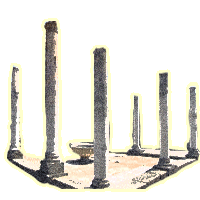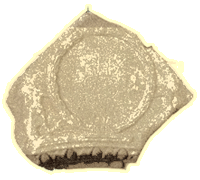 |
||

J U S T I N I A N A P R I M A |
||
|
Justiniana Prima (Serbian Caricin grad) was a Byzantine city. Its location is not known it could have been in today southern Serbia near today's Leskovac, or near Skopje in the Republic of Macedonia. After being founded by emperor Justinian I it existed from the 530s to 615 and was designed as a splendid bishop's seat. The city was a completely new foundation in honour of the nearby village of Tauresium (could be today's village Taor in the Republic of Macedonia, near Skopje), the birthplace of Justinian. The city planning combined classical and christian elements thermae, a forum, streets with colonnades as typical mediterranean features went along with numerous churches. The city existed as the administrative and spiritual center of the whole western Illyricum /central Balkans/ for eight decades (from 535 – 615 AD) situated on the plateau covering the area of 42.000 m2. This site is located 28 km from Leskovac and some 8 km south-west of Lebane. Soon after Justinian’s death was invaded by numerous Slavic tribes and in early 7th century laid to waste. The remains of a river dam placed in the very Empress' river prove that even in these ancient times people were using water power. But this was also one of reasons of waste- wreckage of water supply, aqueduct and drainage of Caricina river. The suggested location of Justiniana Prima in Caricin is not completely proven but based on some evidence, mainly its dating in the 6th century and its geographical setting. Alternative locations such as today's Skopje have been suggested, too. Contemporary sources are rare which makes it difficult to gain a definitive answer. Justinian himself ordered the foundation of the city by law in 535 making it at the same time the capital of the ... Continue |
... prefecture of Illyricum instead of Thessalonike. It also was chosen as the seat of the dacian diocese. It has to be said though that Thessaloniki actually didn't lose much of its administrative functions during the short livetime of Justiniana Prima. Still the new foundation was not without effect and Justinian made sure that this city, that was one of his favourite projects, received all the necessary promotion. In 545 Justinian published another law underlining the episcopal rights and status of Justiniana Prima which is also confirmed by letters that were exchanged between Justinian and pope Gregory at the end of the 6th century. Former Yugoslavian excavations, conducted in stages beginning in 1912, revealed the organisation of the fortified area (about 8 hectares), which was composed of an acropolis, an upper part and a lower part of the town. It also brought to light several public buildings including eight churches. Excavation in the south-west quarter of the lower part of the town has thrown light on ordinary housing which had never really been studied before. The houses, of various designs, were all built without mortar : the base of the walls is made of stone mixed with clay and the upper parts are made of wood and cob. This complex was one of the few residential areas to be located inside the city walls, which usually protected public monuments and official residences. Geophysical prospecting to the south of the town suggests that there is outlying housing which is yet to be explored.  TOP
TOP
|
|
  
|
||











